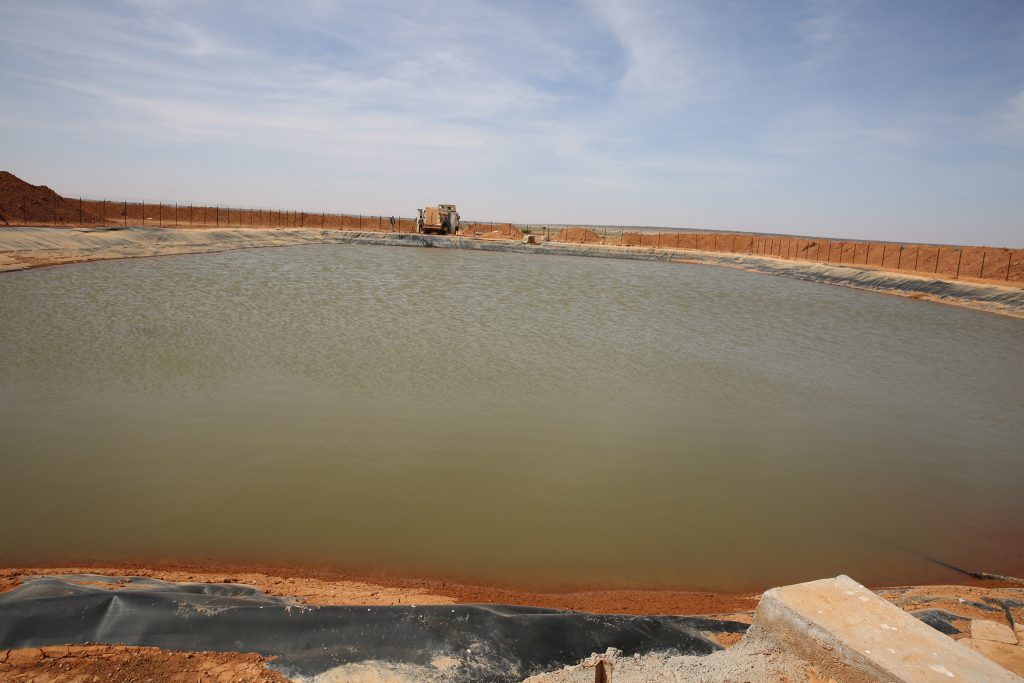Somalia is majorly a dry land. Pastoralists rely on two rainy seasons: Gu’ between March and June; and Deyr rain season, between September and early December. Erratic and unpredictable rain patterns have been the norm for many pastoralist families across the country.
Ali Ahmed, a pastoralist and resident of Qalwo village, is that of hope amidst the despairs and frustrations of not being able to access the most crucial commodity of our lifetime-water.
Like many pastoralist families, Ali Ahmed, father of four children, affirms that, droughts have been the biggest challenge his family faces. He recounts the numerous occasions where he trekked longer days, months and distances in search of water for his family.
In 2017, Somalia experienced the worst drought in years, and many pastoralist families fled their homes in search for water and pasture. Many others were displaced and took off to other towns to save their lives. Ali travelled for 36 hours to the nearest water point, 90 kilometers away from his village to fetch water for his family. This quest for water was eventful, Ali recounts, “We rented a water tank, and once we reached the water point, we had to wait a long queue of people waiting to fetch from the water point. We waited for about 20 hours with hope and excitement of returning home with water, only to experience a machinal problem along the way back.
Amidst all these challenges there was a glimmer of hope for the residents of Qalwo village. Through the BRCiS (Building Resilient Communities in Somalia) Consortium[1] with funding by from The Foreign, Commonwealth & Development Office (FCDO), KAALO a local aid organization built an earth dam infrastructure to help the community harvest rainwater in Qalwo village. Muse Ahmed, the climate project manager for KAALO, is implementing a climate change adaptation programme in Qalwo village.
The community in Qalwo identified water resources management as one of their priority interventions to reduce the effects of the climate crisis in their locality. “The project was a community-led initiative. We met with the community and discussed how we could reduce the impact of the climate crisis and build the community’s resilience. As a result, community have come with this initiative to build this earth dam,” Muse said.
The earth dam has the capacity to hold 36,000 barrels enough to supply water to pastoralists in the locality for about six months. This year, even though Deyr rains were below average, the community could harvest rainwater through the infrastructure, since the earth dam was filled with water.

Earth dam’s impact
The UN estimates that about 3.8 million are affected by the new climate country in Somalia. They have called for humanitarian assistance to help million across millions try. [2]
Despite the alarming situation in Somalia, Ali’s community are bracing themselves for a possible water crisis in the region. But, he says, many would have already prepared for a journey to find water and pasture without this earth dam.
“We have seen people coming to this area to fetch water. Some of them come from very distant places. We are happy to welcome them,” says Farah, a community leader in Qalwo.
Among those who arrived here to fetch water is Said Mohamud, a camel herder, who came from Dangaroyo, about 300 kilometers west of Qalwo. He says, “I travelled a long distance to come here. My family will settle here until the next rainy season. Thanks to this earthdam in Qalwo, there is some hope this season unlike previous experiences. In 2017, Ahmed travelled to the far east of Somalia. “We went to a place near Banderbeyle district, about 650KMs away from Dangorayo. We left our home because we were looking for water and pasture for our camels. But unfortunately, the water became very expensive. We used to pay two dollars to give water to one of our camels, but today I only paid 0.25 cents, which they told it is service money for the guards and other maintenance. Even if I didn’t have it, they told me it was not a must that I pay.”Ahmed Sighed.
Climate change remains a reality of the present time with devastating effects on lives and livelihoods. Management of rangeland, water and the establishment of early warning systems to raise the alarm during crisis can help reduce the impact of the climate.
[1] https://www.nrc.no/what-we-do/brcis-consortium—building-resilient-communities-in-Somalia/
[2] https://reliefweb.int/sites/reliefweb.int/files/resources/Somalia%20Humanitarian%20Bulletin%2C%20November%202021.pdf



